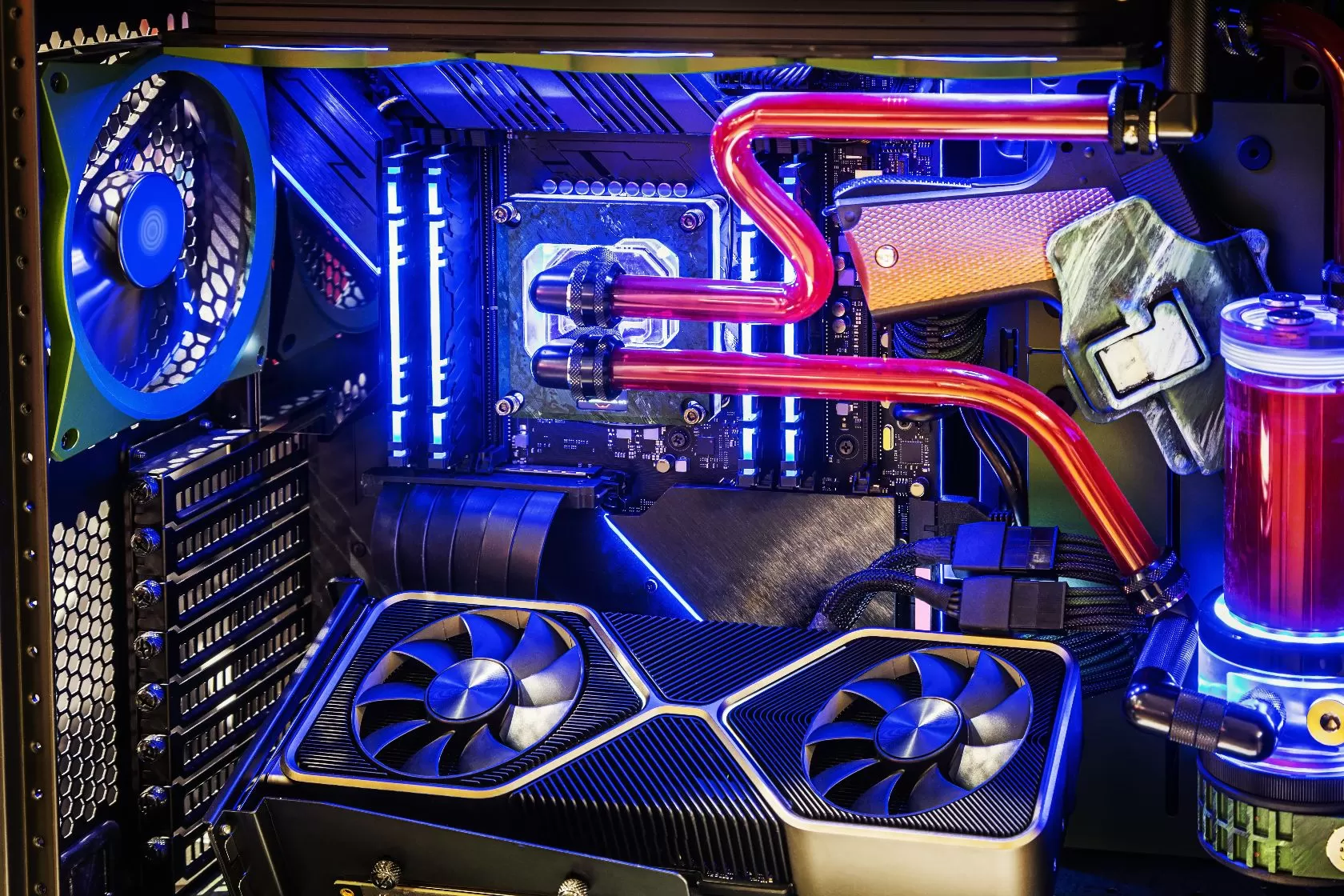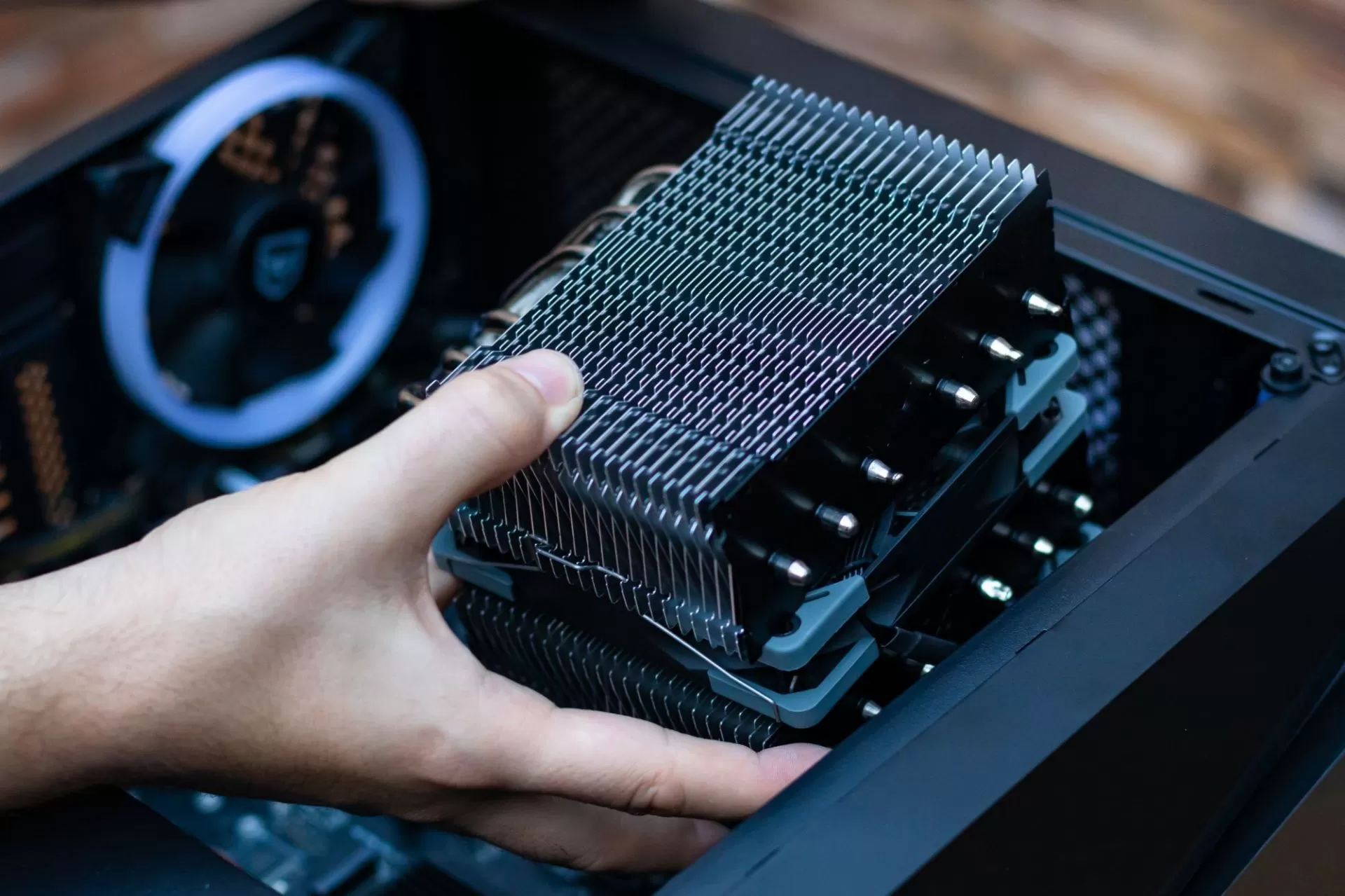In accordance with the European Union’s General Data Protection Regulation (GDPR), we are committed to safeguarding and ensuring your control over your personal data. By clicking “Accept All” you are permitting us to use cookies to enhance your browsing experience, assist us in analyzing website performance and usage, and deliver relevant marketing content. You can manage your cookie settings below. By clicking “Confirm” you are agreeing to the current settings.
Air Cooling vs. Liquid Cooling: Choosing the Right Solution for Your System

CPUs and GPUs can surpass 85°C under load, which risks thermal throttling or hardware failure. Maintaining temperatures during heavy work with cooling provides performance stability and life. The choice between air cooling vs. liquid cooling is key. Air cooling is cheaper and easier but struggles with high thermal densities in small constructions. On the other hand, liquid cooling is quieter and dissipates heat better but is complicated and leaky. Hence, choosing the approach calls for managing workload, thermal, and system design restrictions.
What Is Air Cooling?
Air cooling is among the oldest and most proven thermal management methods in electronics and computing. It uses air as the medium to transfer heat from components with natural convection or forced airflow. In high-performance gaming PCs or data center servers, air cooling is a go-to solution due to its simplicity. Air cooling regulates temperatures while directing airflow over heatsinks and exhaust fans.. Yet, as thermal loads rise with processors and GPUs, it has more limitations than liquid cooling, rendering "air cooling vs. liquid cooling" a debate.
Core Components
Heatsinks serve as the primary heat dissipation components in air cooling. Heatsinks are typically made of aluminum or copper, materials known for their high thermal conductivity. The fins and ridges on a heatsink expand its surface area for heat dissipation. Fans direct cooler air over heatsinks and expel hot air. A fan's performance counts on its CFM (cubic feet per minute) rating. It determines the volume of air it can move. For example, a standard 120mm fan may offer 50-75 CFM. However, high-performance models can reach 100 CFM. Airflow systems in data centers or custom-built PCs use directional channels and baffles to avoid heat pockets. This ensures even cooling distribution across CPUs, GPUs, and VRMs
Advantages
Air cooling systems are more cost-efficient than liquid cooling. A high-quality heatsink and fan combo can rival some entry-level liquid cooling systems in performance. Installation is simple. It needs no special training or tools without the complexities of pumps, reservoirs, and tubing. Moreover, air cooling's reliability is good. Fans have fewer failure points and a life of 30,000 to 50,000 hours (up to 6 years of continuous use). Liquid cooling carries the risk of leaks. Nevertheless, air cooling has no such danger and is safer for mission-critical systems.
Disadvantages
Air cooling has drawbacks as well. Air cooling struggles to handle high thermal loads from overclocked CPUs, such as the AMD Ryzen 9 7950X3D (170W TDP), or multi-GPU configurations in AI and HPC systems. Under heavy workloads, fans must spin faster to compensate and might reach 60 dB for noticeable noise. Small or compact systems exacerbate the issues due to limited space for airflow and trigger thermal bottlenecks. Poorly ventilated setups can cause thermal throttling. This leads to thermal throttling, where processors downclock to prevent overheating, resulting in reduced performance. While air cooling is practical for most applications, liquid cooling handles such challenges for extreme thermal demands.
What Is Liquid Cooling?
Liquid or water cooling is a heat dissipation technique that uses a circulating liquid to transfer and dissipate heat from computer components. Unlike air cooling, liquid cooling uses water's higher thermal conductivity (30 times greater than air) to manage heat. It suits high-performance CPUs, GPUs, and densely packed systems. E.g., modern overclocked processors can operate at stable temperatures with liquid cooling. Air cooling might fail to keep temperatures below 85°C.
Core Components
A liquid cooling system has a pump, radiator, coolant, and heat transfer tubes. The pump circulates the coolant through the system for heat transfer. Radiators in different sizes dissipate heat through aluminum or copper fins cooled by fans. The coolant with anti-corrosion agents and antifreeze absorbs heat from the CPU/GPU via a water block. Tubes are flexible or rigid and transport the coolant. They might be PVC or PETG to bear high temperatures. Custom loop systems can include reservoirs for thermal capacity so no air bubbles disrupt cooling.
Advantages
Liquid cooling provides cooling efficiency in overclocked systems when CPUs and GPUs operate beyond factory limits. For instance, a liquid-cooled CPU can keep temperatures lower than its air-cooled counterpart under load for better component life. Lenovo's Neptune server uses liquid cooling for AI workloads. It keeps processors running at peak performance for hours. Furthermore, liquid cooling is quieter. Fewer fans run at slower speeds to decrease noise levels to as high as 35 dB. Last but not least, liquid cooling systems have RGB lighting and customizable designs. Hence, it appeals to aesthetics and precise component configuration fans.
Disadvantages
Liquid cooling has downsides. For instance, the initial cost is higher. Even an entry-level AIO cooler costs around $100. Custom loop systems are above $300 due to reservoirs and fittings. Installation demands knowledge. Inappropriate assembly can prompt inefficient cooling or system failure. Maintenance is another challenge. Open-loop systems need flushing and coolant replacement every 6-12 months to avert clogging and corrosion. Furthermore, while coolant leaks are rare, they can cause significant damage. For example, a single leak in a data center's water-cooled server could trigger hardware losses worth thousands of dollars. Such perils render air cooling vs. liquid cooling an important decision according to the user's expertise and system needs.
Air Cooling vs. Liquid Cooling: Key Differences
|
Factor |
Air Cooling |
Liquid Cooling |
|
Performance |
- Sufficient for general use and budget builds. - Handles moderate overclocking. |
- Better thermal management for high-performance setups. - Suits extreme overclocking and resource-intensive tasks. |
|
Noise Levels |
- Can get noisy under heavy workloads. |
- Quieter operation due to fewer fans and lower speeds. |
|
Cost |
- More affordable for budget builds. |
- Higher cost but provides better performance per cost in tough scenarios. |
|
Installation and Maintenance |
- Straightforward to install with negligible upkeep. |
- Needs complex installation and systematic maintenance. |
When to Choose Air Cooling

-
Best Suited For: Air cooling is well-suited for budget-conscious builders. It's great for casual gaming and light productivity. If you value reliability and plug-and-play, air cooling is simple and stable.
-
Scenarios Where Air Cooling Excels: Air cooling works well under predictable workloads. Office PCs, entry-level gaming rigs, and non-overclocking computers benefit. Its predictable thermal management manages normal heat loads in ventilated cases.
When to Choose Liquid Cooling
-
Best Suited For: Liquid cooling is ideal for high-performance systems and cases with restricted airflow. Efficient heat transfer benefits overclocked CPUs, power-hungry GPUs, and small enclosures. Liquid cooling lowers noise and gives the setup a premium appearance.
-
Scenarios Where Liquid Cooling Excels: Liquid cooling benefits gaming marathons and resource-intensive video editing. It keeps stable temperatures with high heat output for data centers and content production systems that need ongoing performance. In air cooling vs. liquid cooling, liquid solutions win in thermally taxing conditions.
Click here to learn how our thermal interface materials may boost cooling system efficiency.
